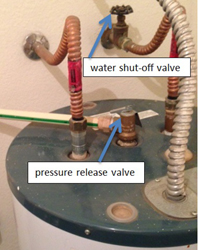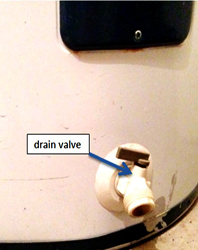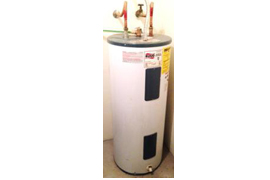Consumer Tips
How to Drain a Water Heater
A major part of your water heater maintenance involves draining the water heater annually to empty sediment that builds up from water deposits and debris. This will also ensure the water heater is running efficiently and extend its life.- 1. Turn off the heating supply to the unit. For electric water heaters, turn off the electricity at the electrical panel by switching off its circuit breaker. For gas water heaters, rotate the lever or knob on the thermostat from "on" to "pilot" position.
- 2. Shut off the water supply by rotating the water shut-off valve atop the water heater.

- 3. Attach a garden hose to the drain valve, extend the other end of the garden hose to a safe area to release the water outlet, and rotate the drain valve to open.

- 4. Caution: The water in the unit will be very hot. You may want to wait a couple hours for the water in the unit to cool before draining.
- 5. Remove the faucet aerators from the faucets throughout the house and turn on the hot water side of faucets.
- 6. Open the pressure release valve on the water heater to release the excess air through the water supply and unit. This should begin the draining process.
- 7. Continue draining the water heater until the unit is empty or until the water runs clear.
- 8. Close the drain valve, restore the pressure release valve to its original position, and turn on the water supply.
- 9. Turn off the hot water faucets throughout the home, and turn the heating source, gas or electric back on. Test for running hot water at a faucet in about 20-30 minutes.

